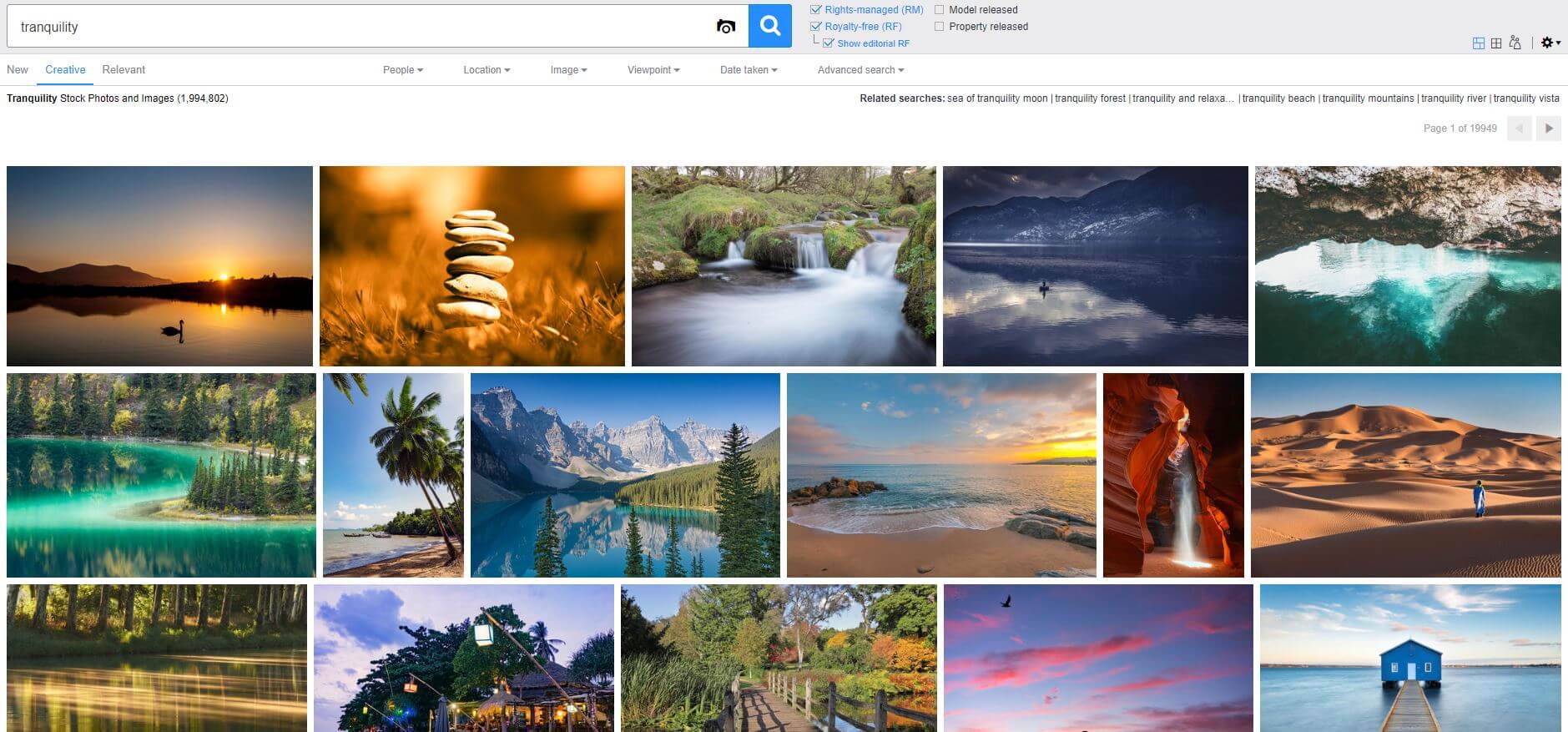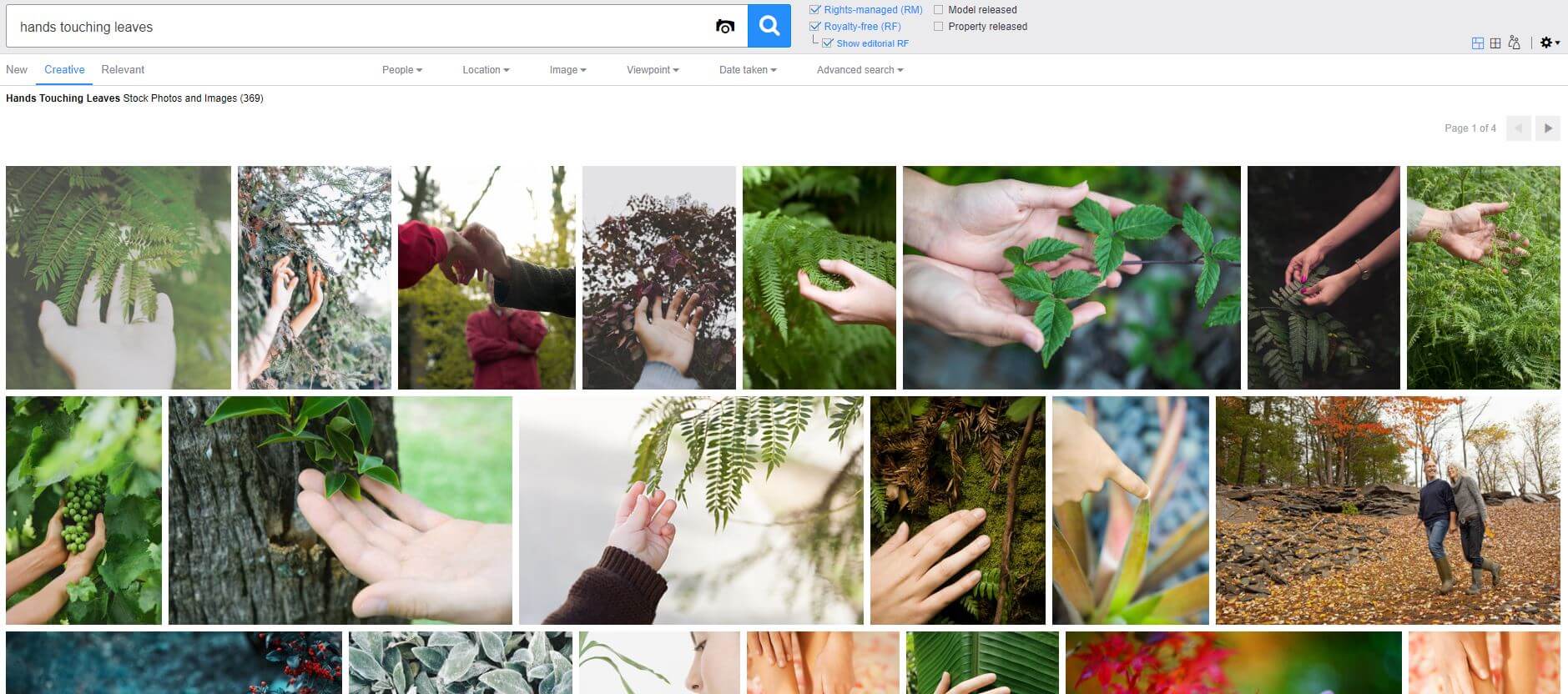When there are hundreds of millions of images to flick through, it can be overwhelming trying to find the perfect picture. What search terms should I use? What if I’m looking for something abstract? What if I’m not sure what I’m looking for at all?
We’d like to help! Below are some tips and guidelines to help you find the right image for your needs while saving you time and unnecessary stress. Even if you don’t know what you’re looking for, we’ll direct you to our best sources of inspiration.
Inspiration
- Fresh picks – this is where you can find the latest and greatest images on Alamy and we update this monthly
- Blog – a creative hub where you can find stock photo trends, insights and inspiration
- Categories page – search by category for inspiration on what kind of picture you want
Now let’s swing to the other side of the spectrum. You’ve got a pretty good idea of what you want but you just can’t seem to find it. Fortunately, you have a lot of power when it comes to manipulating the search engine. At the top of the search results, you’ll find a range of different filters and settings that can help you narrow down your search results.
Literal searches
If you’ve found a picture that fits your need, but you can’t use it, you could consider reverse image search. This allows you to upload the image to our search engine and it’ll pick up similar looking images. You can also whittle your search down by the type of image you’re looking for. We currently categorise image types under the following options:
- Photographs – you know, those 2D pictures that look surprisingly lifelike!
- Vectors – vector graphics has some special properties that other images don’t have such as infinite scalability (read more about vector graphics here)
- Illustrations – these are digital paintings made on a bitmap
- Social – these images reflect the authentic, user-generated content feel you see on platforms like Instagram
- 360° images – interactive images that allow you to explore a space in three-dimensions
- Live news – this is where you can find the most current press pictures
You’ll also notice some additional search options at the top where you can choose whether you need a rights-managed (RM) or a royalty-free (RF) licence as well as releases. If you’re using your images commercially, your images should be model and property released so tick both of those boxes.
Below these settings, you’ll find the search filters. This is where you can be quite specific about what specific elements you need in your image. Most of them are quite self-explanatory such as the number of people in an image or what age group they are. You can also narrow your search down by colour; which would allow you to build designs around a certain colour scheme.
What if you’re still having issues getting the right results from the search engine? This is where the ‘advanced search’ options can solve your problems. Here you can filter by contributor name if you have any favourites or know one who specialises in what you’re looking for. You can also be quite specific about your search query. For example, if you’re getting some undesirable results, then you can choose words to exclude. This will give you a tighter set of results so that you’re spending less time sifting through images that don’t match your needs.
Technical search guidelines
There are also a few ways you can optimise your image search by simply adding some punctuation in the search bar:
- Use ( ) signs when searching for subjects that our contributors might have captioned in different ways. Say you want an ‘umbrella’ on a beach. You’ll need to separate each word for that subject using e.g. (Umbrella or Parasol or Sunshade or Canopy) Beach.
- More keywords should increase the number of search results for the image you’re trying to find. This can be taken even further when isolating more subjects or aspects within the image e.g. (Umbrella or Parasol or Sunshade or Canopy) (UK or ‘United Kingdom’ or England) Beach.
- A top tip – use single quotation marks to group names and phrases together. In the United Kingdom example above, leaving this without that punctuation will invite other aspects into the search results like United Arab Emirates.
Next time you’re searching on Alamy, try the above tactics out to improve and enhance your search experience.
Abstract searches
Abstract searches revolve around finding images that convey an idea or concept. You may be tempted to use words like ‘tranquillity’ to do this. In the English language, we call these types of words abstract nouns because they are difficult to define and, in many cases, have subtle variations in interpretation from person-to-person.
In contrast, concrete nouns such as ‘table’ can be easily defined, and we can always connect with concrete nouns using one of our senses. This is why abstract searches can be so difficult to get right and are often quite time-consuming. But there are a few things you can do to speed up the process.
The easiest thing to do is use a thesaurus. Language is personal so while one person might say ‘tranquillity’, another might say ‘serenity’. Build up a list so you can search through them all. This does introduce the risk of unreliable results popping up because images often aren’t tagged in this way unless the image was designed to be conceptual and, in those cases, the results can be quite cheesy and obvious in order to make it clear what the concept is.
You will get much better results by building up a picture in your head of how you want to convey ‘tranquillity’. Is it a mountain range or clouds? Is it a certain colour? Perhaps you’re after certain shapes and lines; horizontal lines tend to convey tranquillity while vertical lines convey authority and stature. With this technique, you’re spending time designing the image in your head before you even input any words into the search engine. But once you’ve built that picture, you can treat it like a literal search again.
Here are the search results for ‘tranquillity’ and ‘birds flying over sunrise view of mountains’.
Search results for ‘birds flying over sunrise view of mountains’
As you can see, there are two very different set of results. In this case, ‘tranquillity’ gave us pretty decent results. Of course, it’s a little subjective which images you prefer; however many of the ‘tranquillity’ results lack a subject or focus in the image because they are predominantly landscape images. Images without a subject tend not to be as engaging because there isn’t a focal point to attract the viewer’s attention.
Shall we try another one? Let’s say we need images for an article titled ’10 ways to be more mindful’.
Search results for ‘mindfulness’
The results for ‘mindfulness’, as expected, are a little obvious and some of them don’t really fit the bill at all. One aspect of mindfulness is that it’s about being in touch with your senses so what if we tried ‘hands touching leaves’.
Search results for ‘hands touching leaves’
The results here may be less varied but that can be a good thing because you don’t have to weigh up as many variables and therefore have more clarity in your decision-making. The images are also less cheesy and generally a bit more aesthetically pleasing. It also leads you into other search queries such as ‘smelling food’ that could help you build up a set of images.
Remember, your imagination is your greatest tool when it comes to searching for images. If you can design the perfect picture in your head and then search with that in mind, you’ll find it easier to get the right results quickly.




